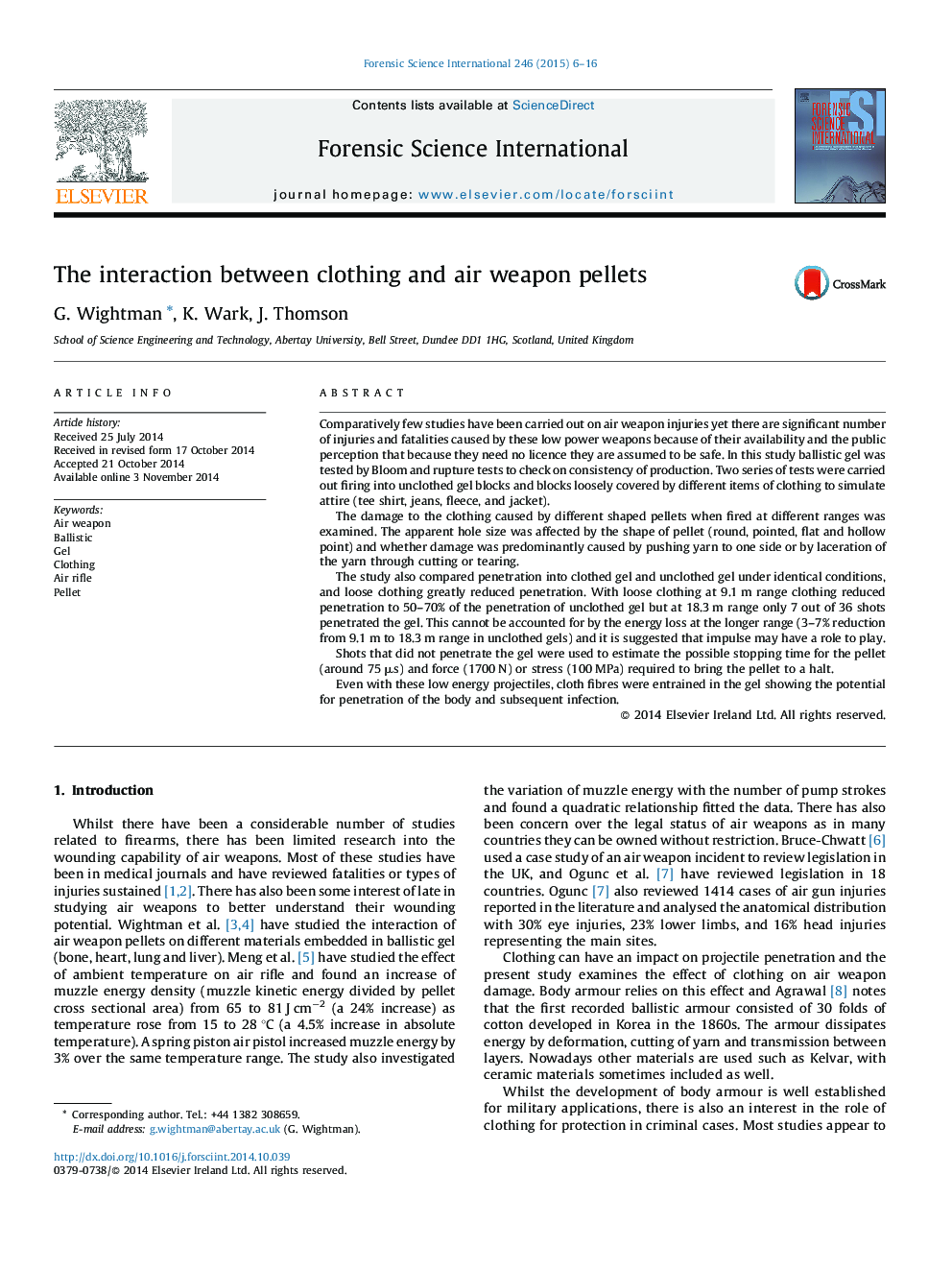| کد مقاله | کد نشریه | سال انتشار | مقاله انگلیسی | نسخه تمام متن |
|---|---|---|---|---|
| 95530 | 160434 | 2015 | 11 صفحه PDF | دانلود رایگان |
• The effect of clothing on air weapon pellet penetration into ballistic gel has been examined.
• Damage to the clothing depends on pellet shape and fabric weave.
• Penetration depends on range, pellet shape, the fabric weave, and how the clothing is in contact with the gel.
• With loosely draped clothing at 20 yards range few pellets penetrated the gel.
• Estimates suggest that these pellets stop in 75 μs, requiring a force of 1700 N.
Comparatively few studies have been carried out on air weapon injuries yet there are significant number of injuries and fatalities caused by these low power weapons because of their availability and the public perception that because they need no licence they are assumed to be safe. In this study ballistic gel was tested by Bloom and rupture tests to check on consistency of production. Two series of tests were carried out firing into unclothed gel blocks and blocks loosely covered by different items of clothing to simulate attire (tee shirt, jeans, fleece, and jacket).The damage to the clothing caused by different shaped pellets when fired at different ranges was examined. The apparent hole size was affected by the shape of pellet (round, pointed, flat and hollow point) and whether damage was predominantly caused by pushing yarn to one side or by laceration of the yarn through cutting or tearing.The study also compared penetration into clothed gel and unclothed gel under identical conditions, and loose clothing greatly reduced penetration. With loose clothing at 9.1 m range clothing reduced penetration to 50–70% of the penetration of unclothed gel but at 18.3 m range only 7 out of 36 shots penetrated the gel. This cannot be accounted for by the energy loss at the longer range (3–7% reduction from 9.1 m to 18.3 m range in unclothed gels) and it is suggested that impulse may have a role to play.Shots that did not penetrate the gel were used to estimate the possible stopping time for the pellet (around 75 μs) and force (1700 N) or stress (100 MPa) required to bring the pellet to a halt.Even with these low energy projectiles, cloth fibres were entrained in the gel showing the potential for penetration of the body and subsequent infection.
Journal: Forensic Science International - Volume 246, January 2015, Pages 6–16
